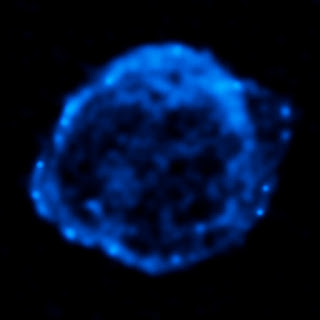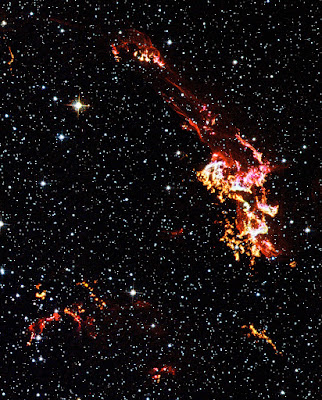The first scientific evidence for the Big Bang was found in 1929, when astronomers discovered that light from distant galaxies is rendered. This color change happens when objects are moving away from us, making light waves stretch out and change color. The more distant the galaxies are, the faster they rushing away. This shows that the whole Universe is expanding.
Big Bang afterglow:-
More evidence of the Big Bang came in the 1960s, when astronomers detected faint microwave radiation coming from every point in the sky. This mysterious energy is the faded remains of the intense burst of energy released in the Big Bang.
Changing elements:-
For hundreds of millions of years, the Universe consisted almost entirely of hydrogen and helium- the very simplest chemical elements.
After stars appeared, new elements began to be made in the cores of dying stars. All the complex elements in our bodies were forged in dying stars this way.
Big Bounce theory:-
What caused the Big Bang? We may never know for sure, but some scientists have suggested that there may have been lots of big bangs, with the Universe expanding after each one and then shrinking again. This theory is called the Big Bounce because the process repeats itself.
 |
| No charge in starlight |
 |
| Light waves stretched |
Big Bang afterglow:-
More evidence of the Big Bang came in the 1960s, when astronomers detected faint microwave radiation coming from every point in the sky. This mysterious energy is the faded remains of the intense burst of energy released in the Big Bang.
 |
| Microwave map of whole sky |
Changing elements:-
For hundreds of millions of years, the Universe consisted almost entirely of hydrogen and helium- the very simplest chemical elements.
After stars appeared, new elements began to be made in the cores of dying stars. All the complex elements in our bodies were forged in dying stars this way.
Big Bounce theory:-
What caused the Big Bang? We may never know for sure, but some scientists have suggested that there may have been lots of big bangs, with the Universe expanding after each one and then shrinking again. This theory is called the Big Bounce because the process repeats itself.

















